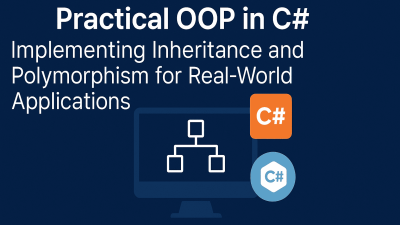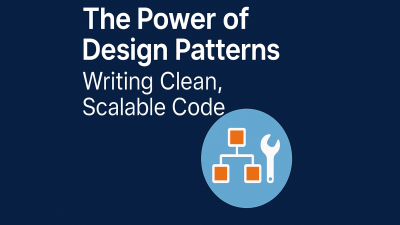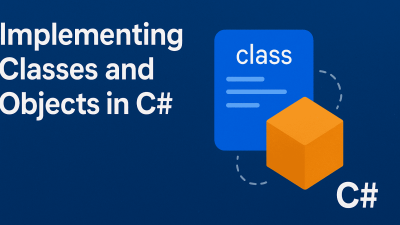Object-oriented programming (OOP) is a programming paradigm that organizes software design around objects and classes. Key principles such as encapsulation, abstraction, inheritance, and polymorphism help create structured, maintainable, and scalable code. Mastering these concepts is essential for building efficient and flexible software systems.
Objects and Classes: The Building Blocks of OOP
In OOP, classes act as blueprints that define the structure and behavior of objects. A class specifies properties (attributes) and methods (functions) that its objects will possess.
For example, in a library management system, a Book class might define properties like Title, Author, and ISBN, along with methods such as Borrow() and Return(). Each physical book in the library is an object—an instance of the Book class—with its own unique state and behavior.
By organizing code into classes, developers promote reusability and scalability, ensuring that objects maintain consistent behavior while allowing flexibility in implementation.
Encapsulation: Securing Object Data
Encapsulation is the practice of bundling data (attributes) and methods within a class while controlling access to internal components. This principle ensures data integrity by preventing unauthorized modifications.
Access modifiers regulate how class members are accessed:
- private: Restricts access to the containing class only.
- protected: Allows access within the class and its derived classes.
- public: Permits access from any part of the program.
For instance, a BankAccount class might keep the balance field private to prevent direct external changes. Instead, controlled interactions are provided via public methods like Deposit() and Withdraw(), ensuring proper validation and security.
Abstraction: Simplifying Complex Systems
Abstraction focuses on hiding implementation details while exposing only essential features. This reduces complexity and allows developers to interact with objects at a higher level.
Two common ways to implement abstraction are:
- Abstract Classes: Provide a partial implementation with some concrete methods and some that must be overridden by derived classes.
- Interfaces: Define a contract specifying required methods without any implementation.
For example, a banking application might use an abstract Account class with a method CalculateInterest(). Subclasses like SavingsAccount and CheckingAccount would implement their own logic for interest calculation. External code interacts with these accounts without needing to know the underlying details.
Inheritance: Reusing and Extending Code
Inheritance allows a new class (derived class) to inherit properties and methods from an existing class (base class), promoting code reuse and hierarchical organization.
Key Benefits of Inheritance
✔ Code Reusability – Derived classes reuse existing base class code without rewriting it.
✔ Extended Functionality – New methods can be added, or existing ones modified, without altering the base class.
Example: Class Hierarchy
Consider a Bird base class with derived classes Eagle and Parrot:
- Both inherit common properties (Wings, Fly()) from Bird.
- Each can introduce unique behaviors (Eagle.Hunt(), Parrot.MimicSound()).
This mimics biological classifications, making code organization more intuitive.
Polymorphism: One Interface, Multiple Implementations
Polymorphism allows methods to perform different actions based on the object’s type. It is achieved through:
- Method Overriding – A derived class provides a specific implementation of a base class method.
- Interface Implementation – Different classes implement the same method in their own way.
Example: Coffee Maker System
A base class CoffeeMaker defines methods:
- AddWater()
- AddBeans()
Derived classes override these methods:
- DripCoffeeMaker uses the base methods.
- SuperAutomaticCoffeeMaker overrides AddBeans() to include grinding functionality.
Advantages of Polymorphism
✔ Flexibility – Objects behave differently while sharing a common interface.
✔ Extensibility – New classes can be added without modifying existing code.
Conclusion
The principles of objects, classes, encapsulation, abstraction, inheritance, and polymorphism form the foundation of OOP.
- Encapsulation ensures data security.
- Abstraction simplifies complex systems.
- Inheritance promotes code reuse and hierarchy.
- Polymorphism enables flexible and dynamic behavior.
By mastering these concepts, developers can build secure, maintainable, and scalable applications, enhancing efficiency and adaptability in software development.



